In search of magic: Lhasa
By Pictolic https://pictolic.com/article/in-search-of-magic-lhasa.htmlWe continue our cycle of stories about the journey through the mysterious Tibet. This issue is dedicated to Lhasa - a completely modern city with a unique oriental flavor.
After celebrating Buddha's birthday, the next morning we left for Lhasa. Having passed a couple of passes, we made a stop at the sacred lake Yamdrok-tskho. A little later we crossed the Yarlung River (called the Brahmaputra in India) and entered Lhasa.
(Total 44 photos)
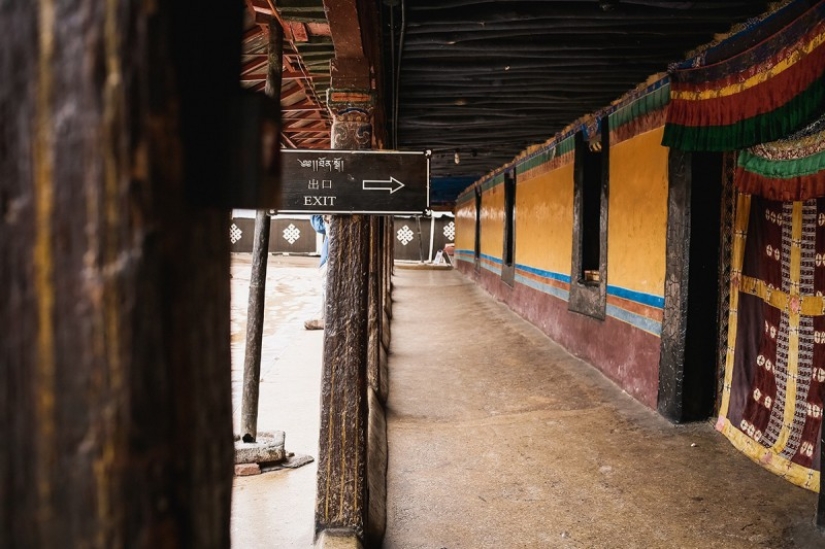
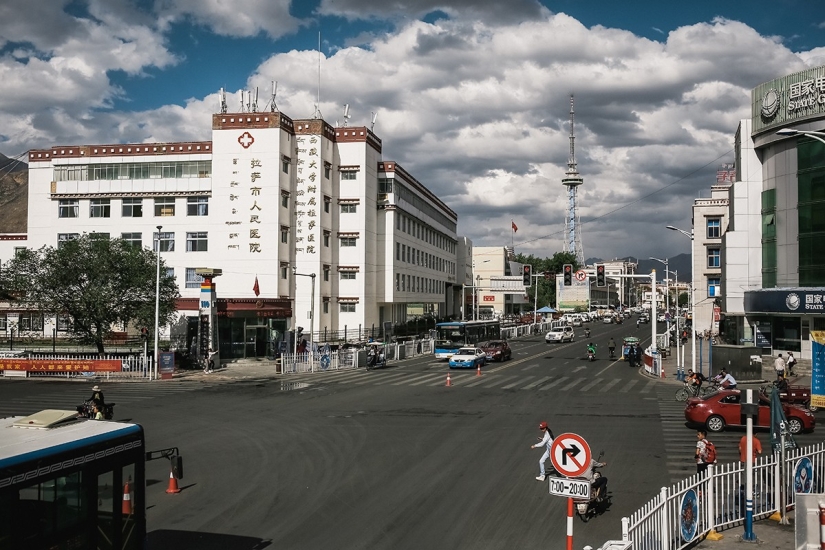
1. Today Lhasa is a quite modern city with developed infrastructure and communications.
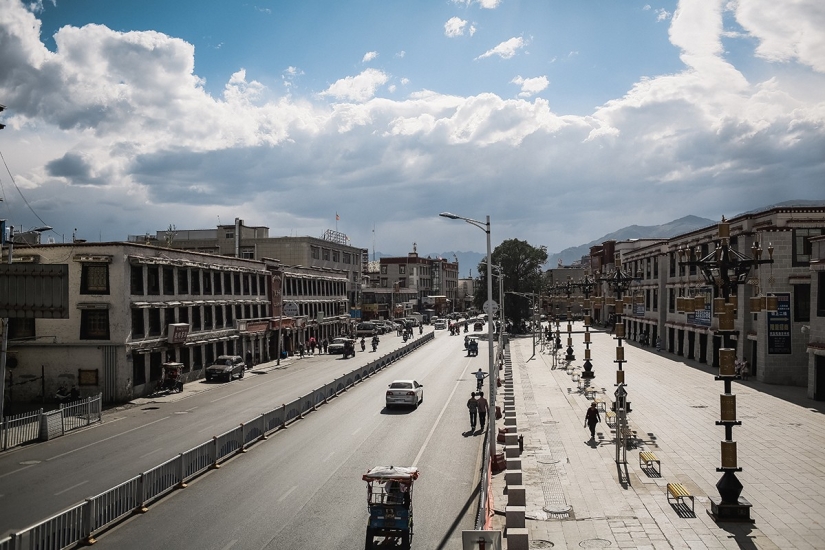
2. The streets of the new districts are wide, there is a lot of public transport and cars, although there are also rickshaws.
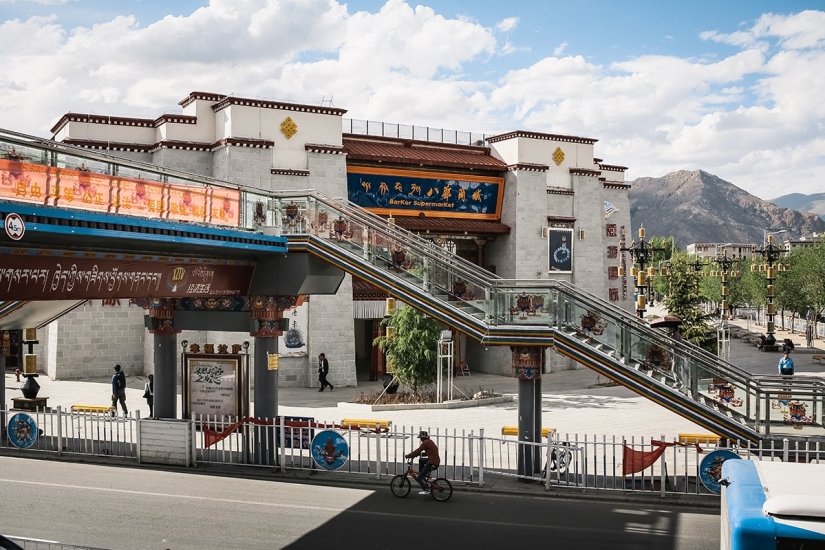
3. The only thing that distinguishes Lhasa from European cities is its "oriental" flavor.
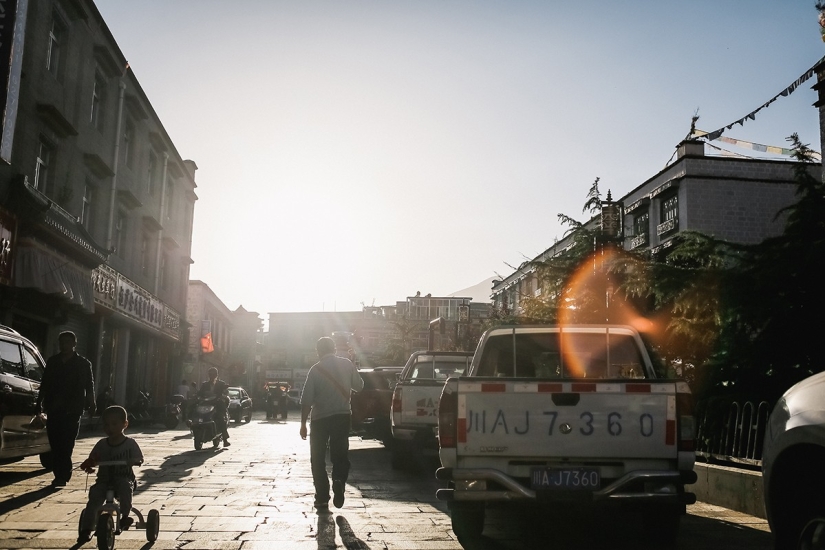
4. We checked into a small hotel on a quiet street in the southeastern part of Lhasa. The main advantage of the hotel was its location - next to the old center of Lhasa, the Barkhor district.
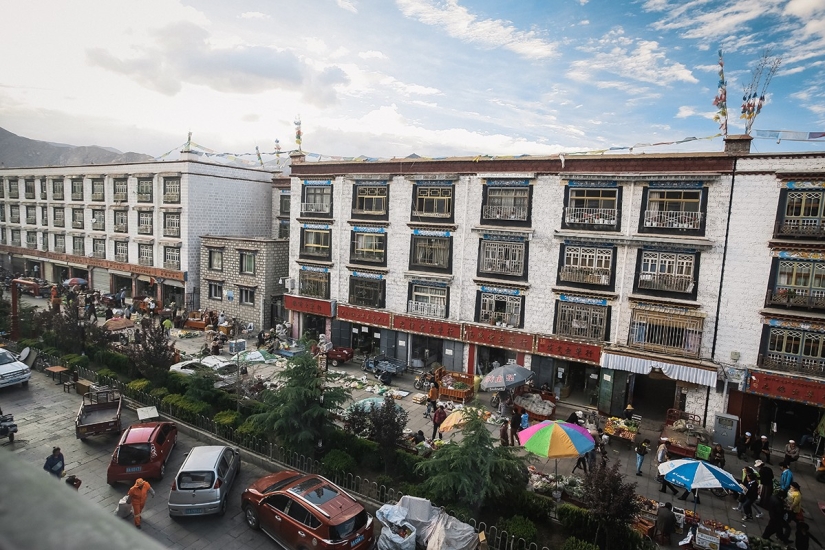
5. View from the hotel room. Right under the windows is a vegetable market.
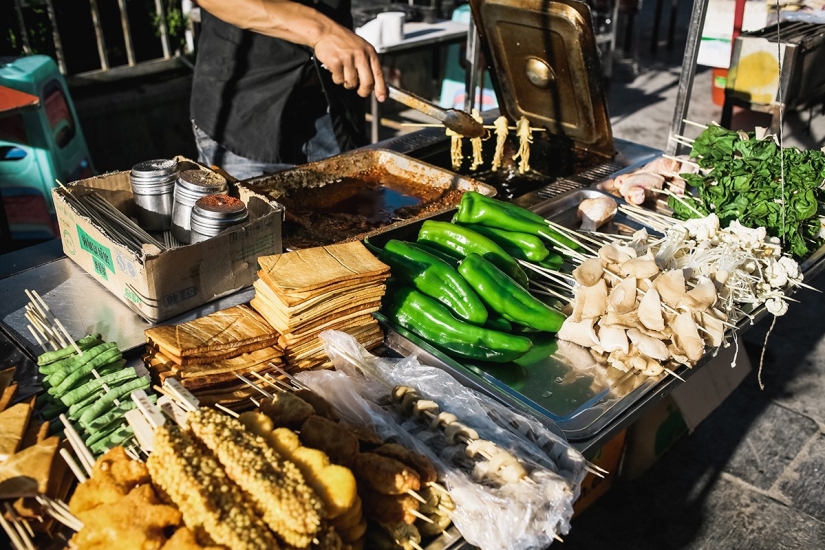
6. Local Uyghur Muslims, who are resettled by the Chinese authorities from the Xinjiang Uygur Autonomous Region neighboring Tibet in order to dilute the local population, can taste delicious skewers of vegetables, mushrooms or meat. Everything is cheap, 3-5 yuan per skewer. Next to the seller there is a bench, sitting on which you can eat it all. But when he saw that we were taking out a bottle of Lhasa beer, the owner protested. They are Muslims, alcohol is prohibited...
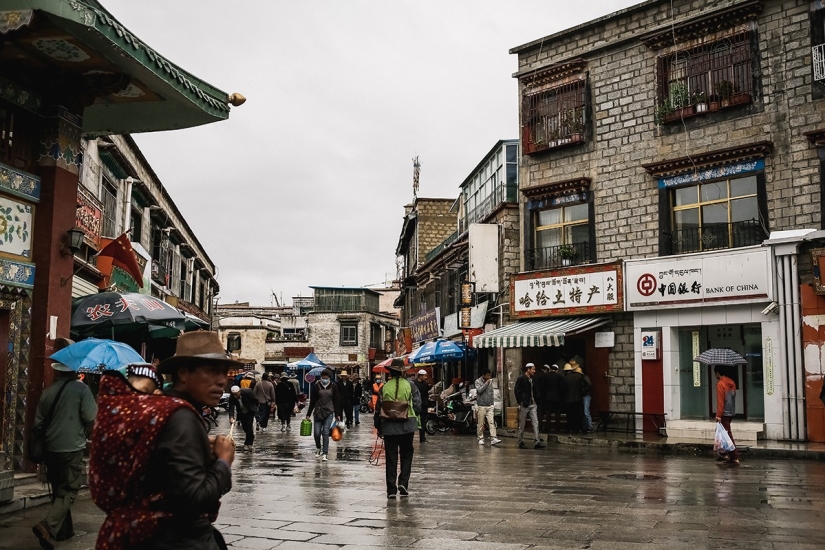
7. The next morning, despite the rain (for the first time on the whole trip), we went on an excursion.
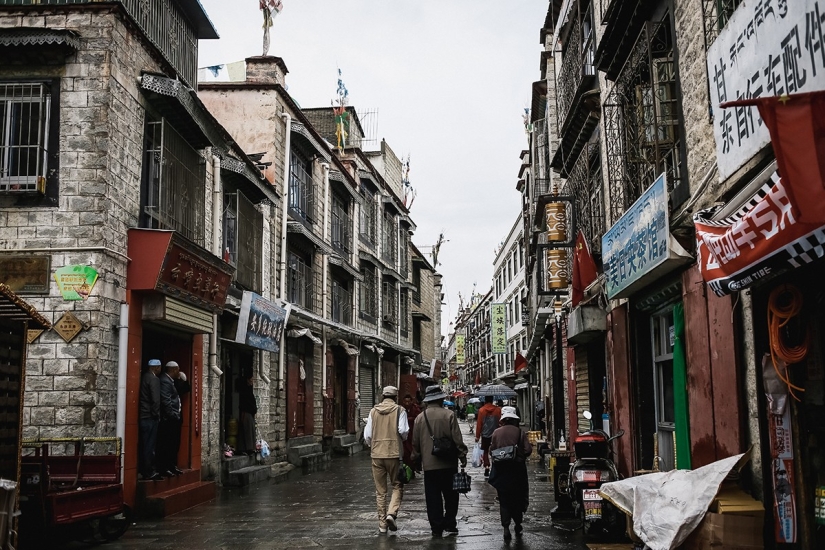
8. Old Lhasa is beautiful.
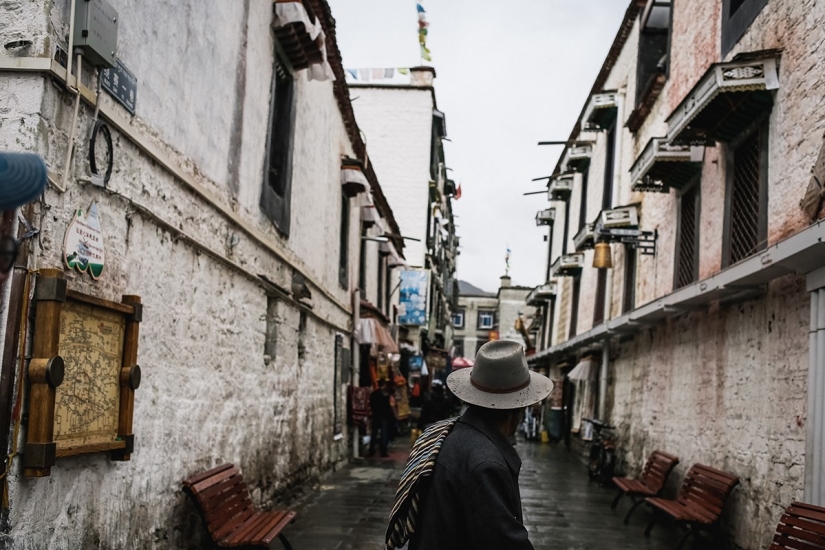
9. In general, it is easy to get confused in the back streets of the Old City. Therefore, maps are hanging everywhere indicating the place where the person is now.
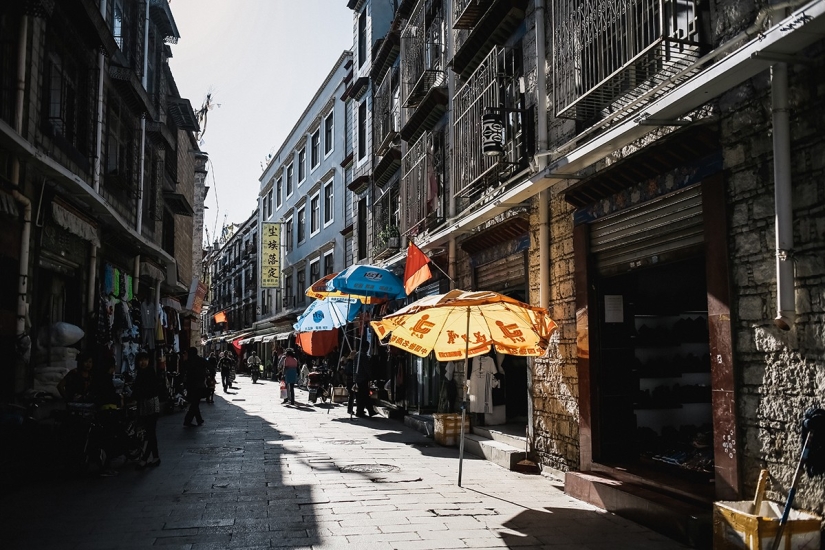
10. While we were walking through the narrow streets, the rain stopped, the sun came out again. After passing through the metal detectors (they are on all the streets facing Barkhor), we found ourselves in the Old City.
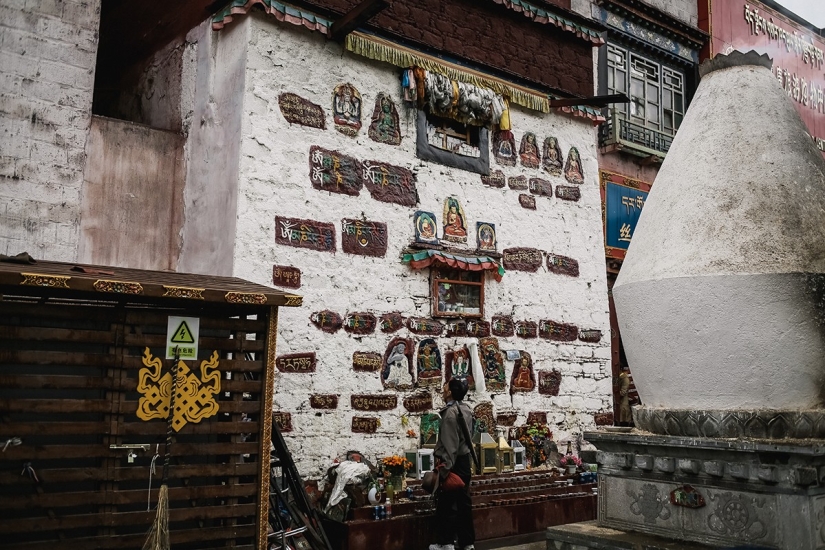
11. As it turned out, we went to the back side of the Jokhang temple.
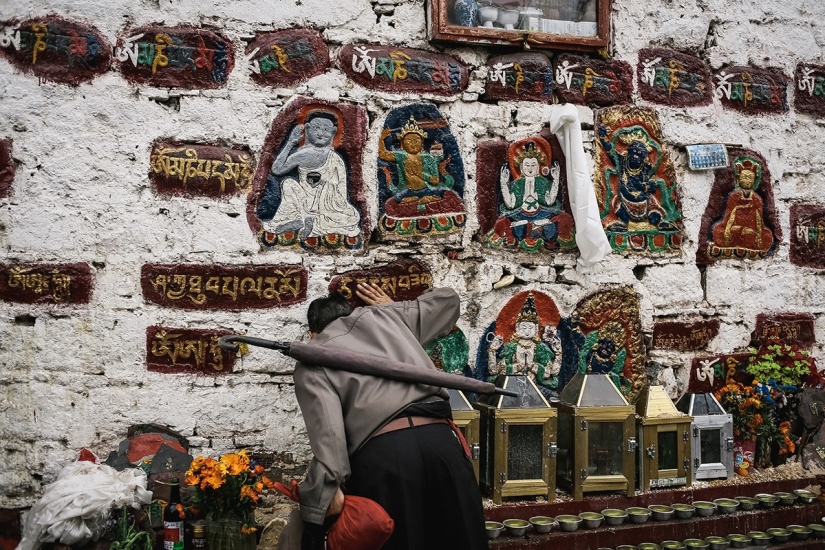
12. But backyards in Lhasa are no less interesting than the main entrances. For example, not only tourists come to this altar in the wall. For Tibetans, this is another place of worship.
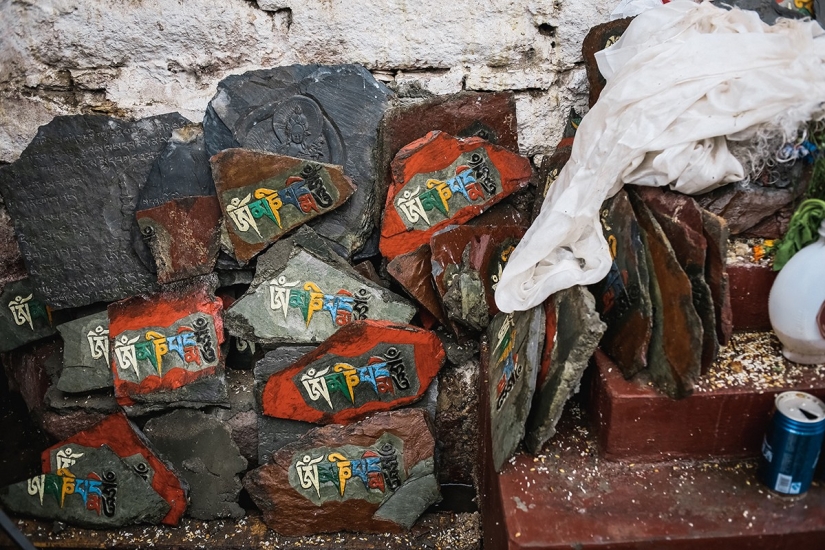
13.
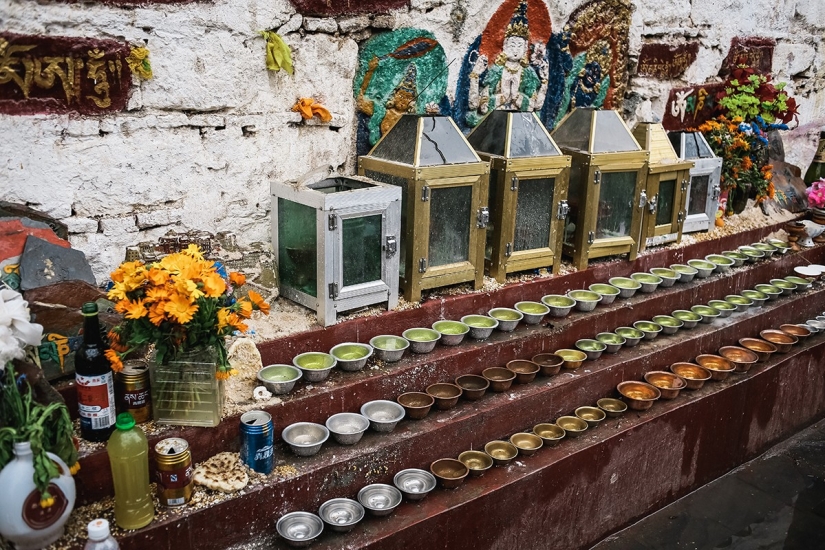
14. Traditional water cups are the simplest and least ceremonial way to make an offering to the Buddhas. Sometimes yellow saffron water is poured into the cups, but in its absence plain water will do.
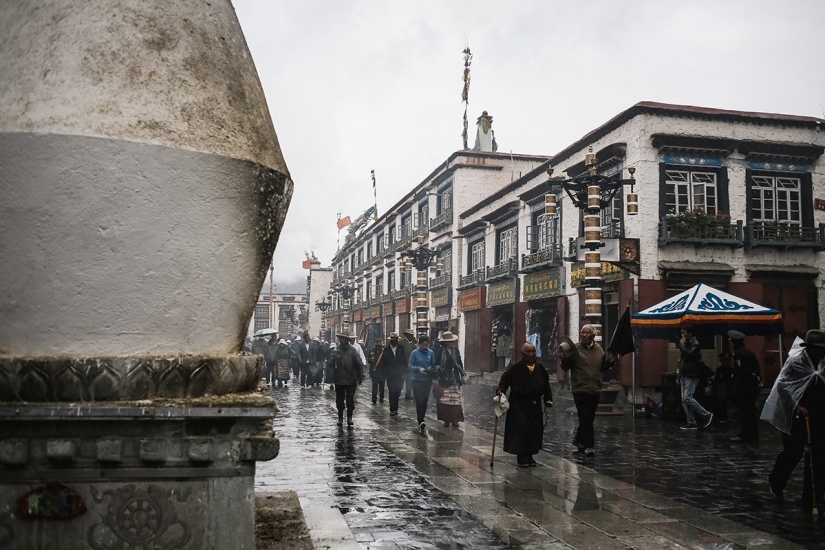
15. Before entering a Buddhist temple, visitors try to make at least one complete circuit around it.
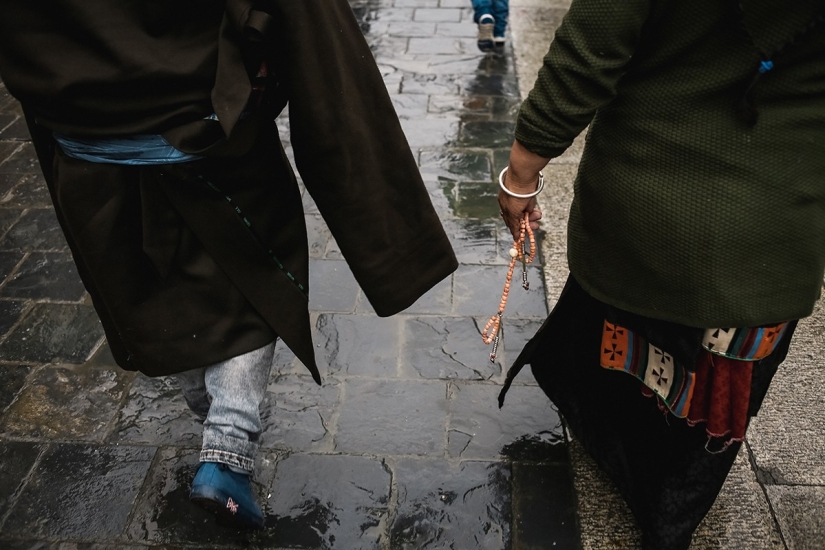
16. As a rule, mantras are recited with the help of a rosary.
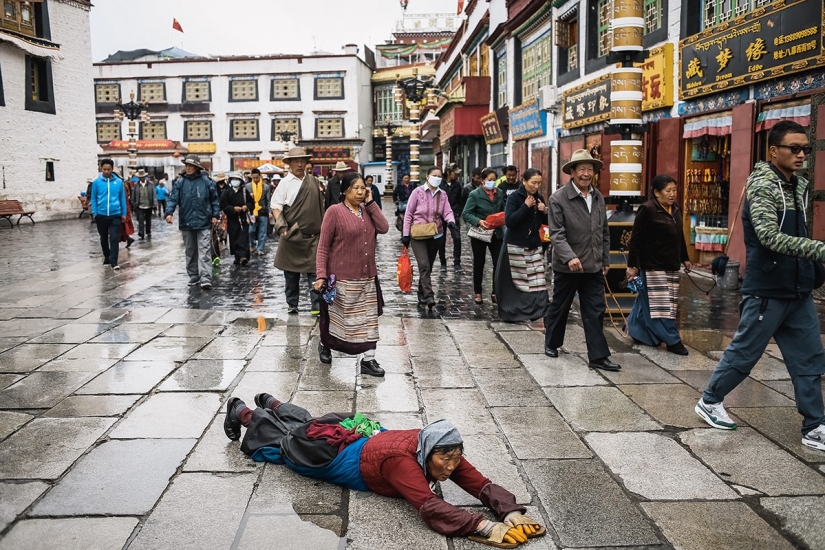
17. Some people prefer to spend more time on circumambulation, but at the same time get more merit by making prostrations.
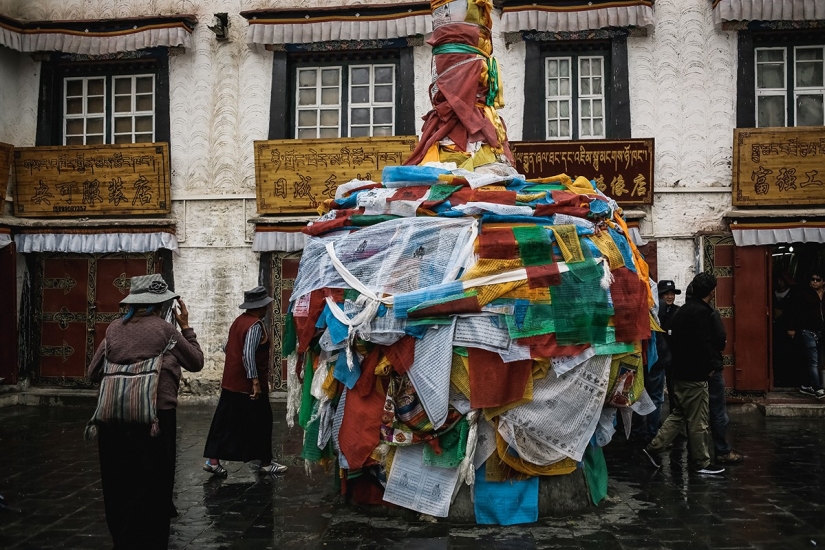
18. Along the way, various objects of worship are encountered, for example, this pole wrapped in lungta flags - the Tree of Life.
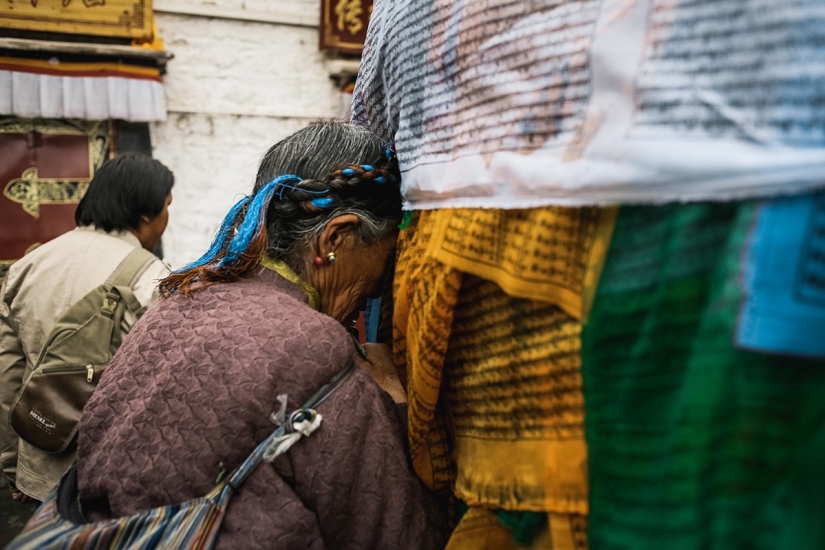
19. Tibetan grandmothers do not miss the opportunity to pray near him.
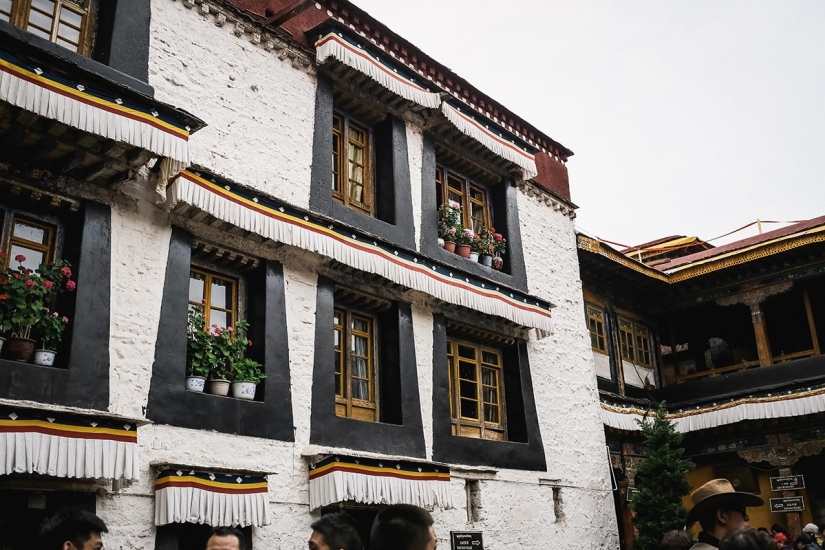
20.
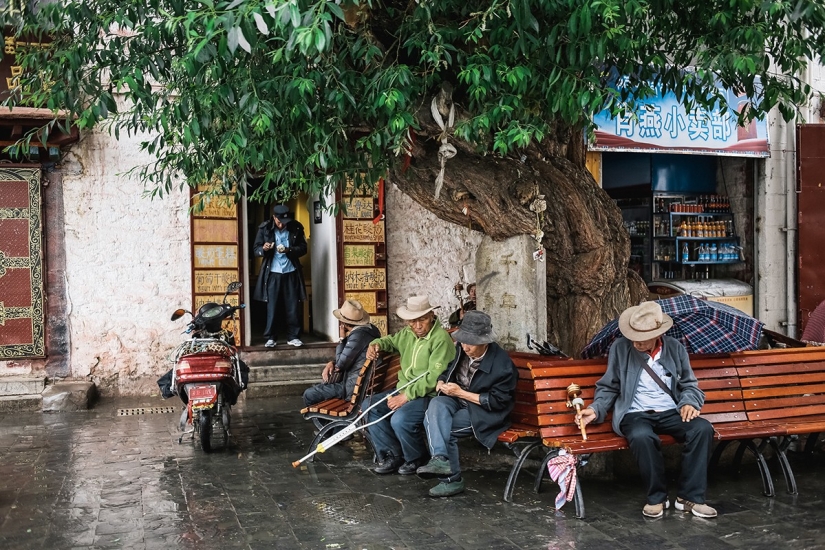
21. Since the temple occupies a whole block, 25,000 square meters, it takes a lot of time to walk around it, and the elderly can rest before continuing their journey.
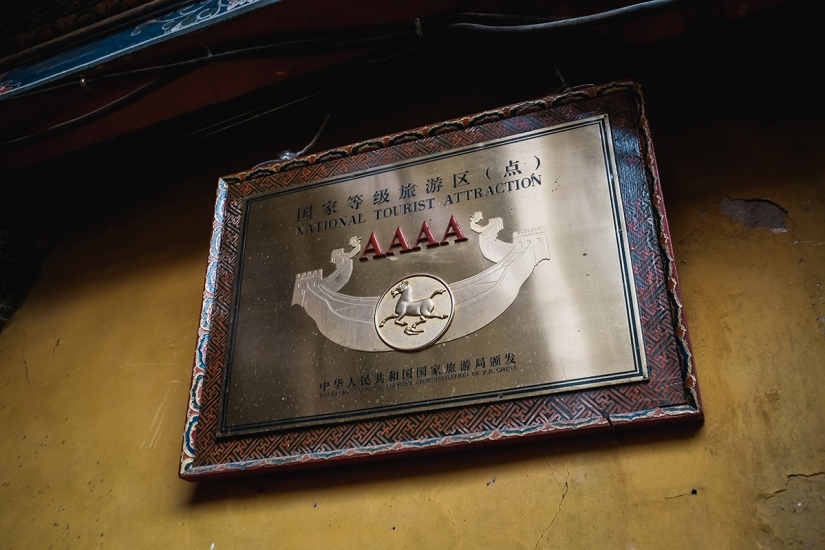
22. Finally, we were in front of the entrance to the temple and were ready for inspection. The Jokhang is a protected UNESCO World Heritage Site. The category 4A assigned by the Chinese testifies to its great importance. This is a very high category. For example, 5A in China have such monuments as the Forbidden Palace in Beijing or the Great Wall.
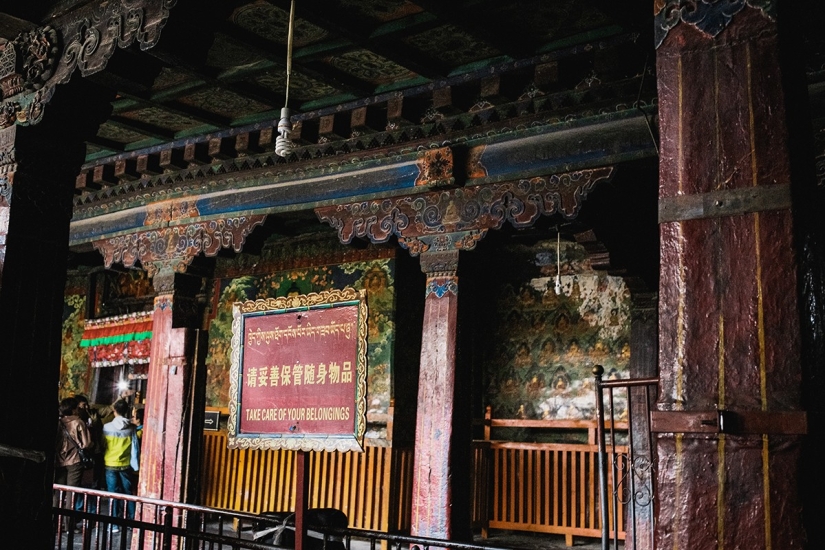
23. But for ordinary people, the Jokhang is important for other reasons. It can be called the spiritual heart of Lhasa. Westerners are more familiar with the Potala, the palace of the Dalai Lamas. But in fact, ordinary people were forbidden to enter the Potala. But the Jokhang is a place where any Tibetan could come.
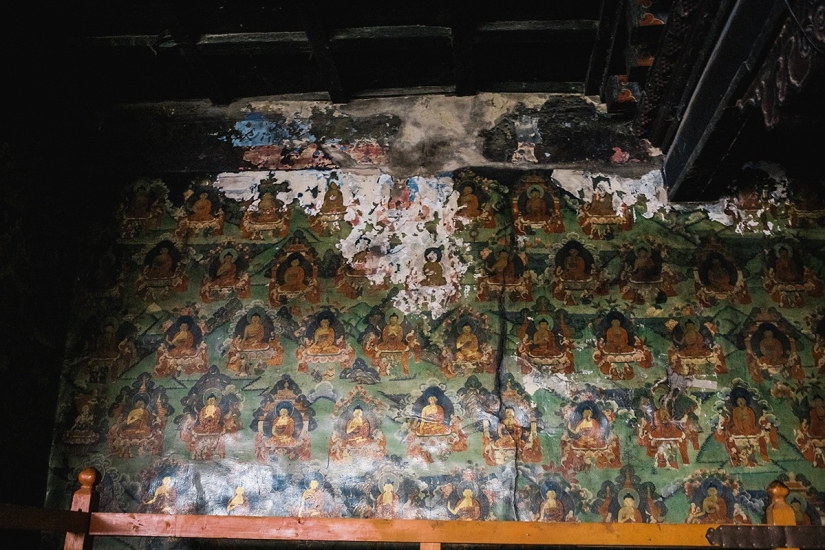
24. The walls inside the temple are painted with very beautiful old frescoes.

25.
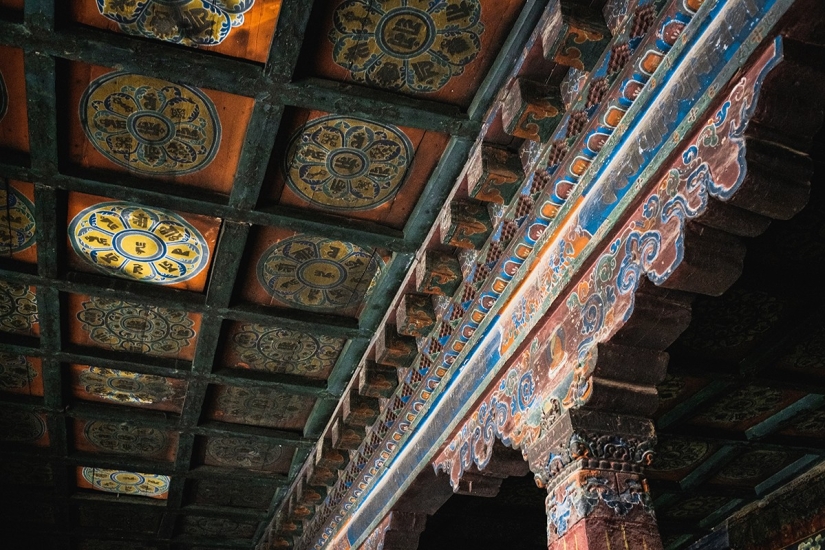
26. Buddha mandalas are on the ceilings.
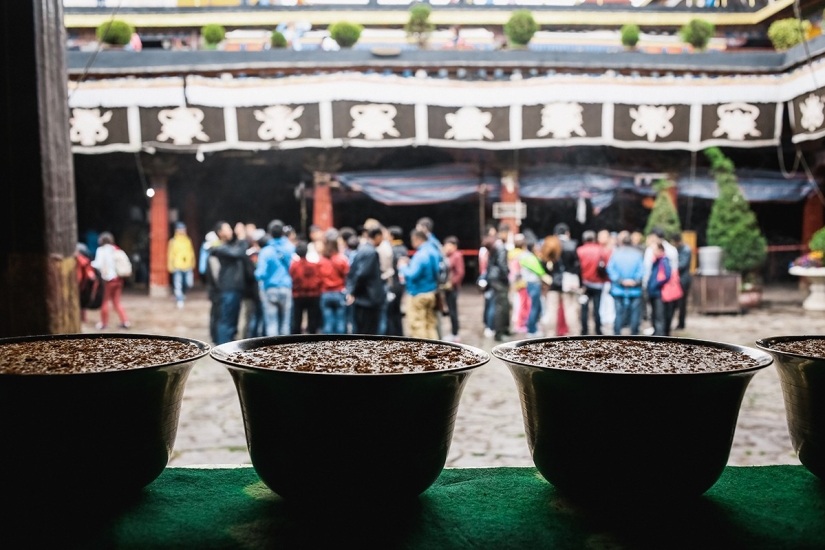
27. Jokhang began to build in 639 the famous king Songtsen Gampo. His wife, the Chinese princess Wencheng, with the help of Tibetan geomancy "sache" (although it was more likely Chinese feng shui) found the right place in the valley. The princess imagined the valley as the body of a huge demoness, and the Potala was in her heart, and in the place of her genitals there was a lake. To neutralize the evil influence of this demoness, the king ordered to build a temple right on this place.
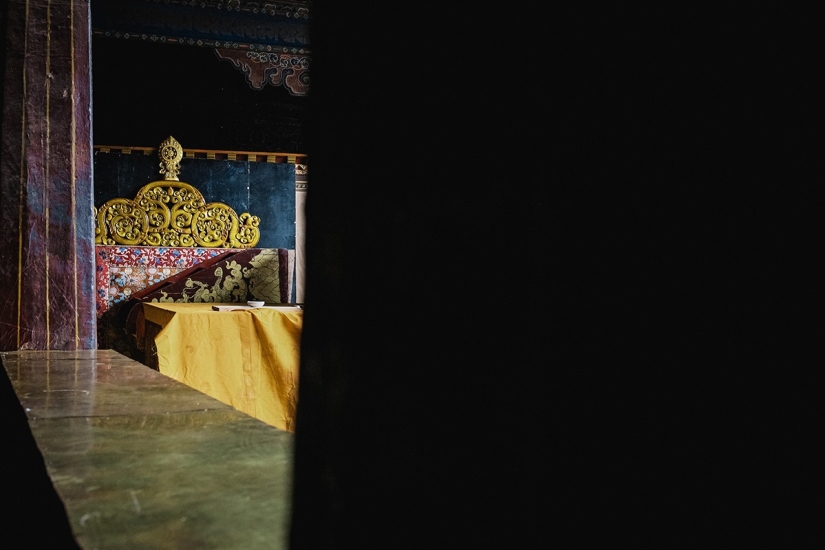
28. Most likely, before the temple was built, the lake was drained. But our guide assured us that the temple was built on special beams right above the lake. More recently, when he was a child, together with friends they ran here to listen through a special auditory hole as the water splashes below. As proof, he showed us this hole. But today it is covered with sand, and nothing is heard.
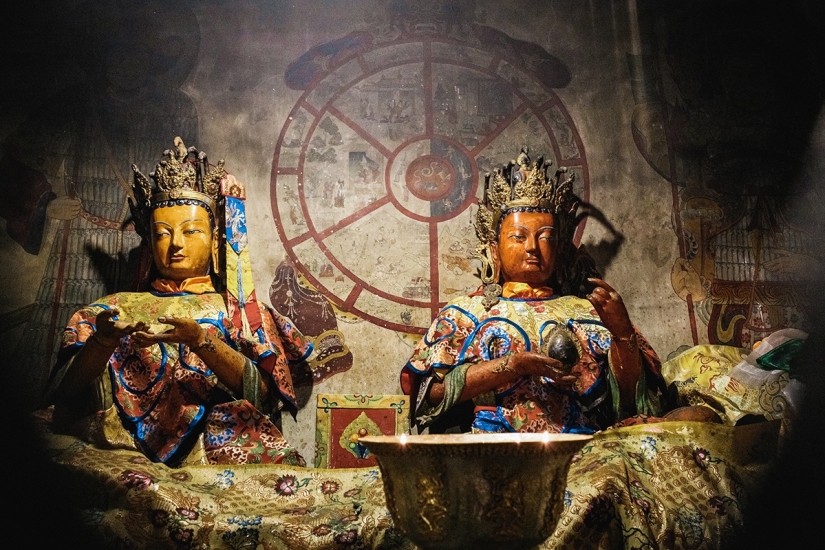
29.
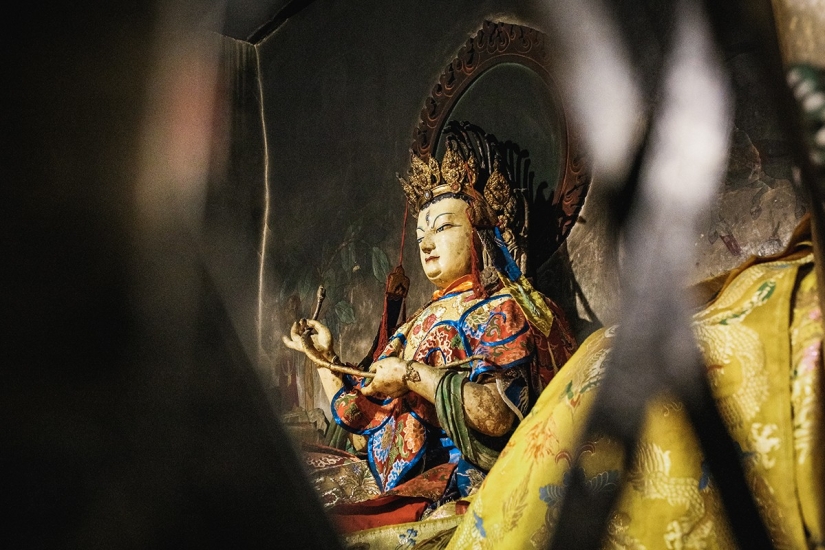
30. There are many wonderful sculptures in the temple. It is a pity that only one hour is allotted for a group visit to foreigners. Of these, only 20 minutes to visit the gallery of a thousand buddhas. During this time it is impossible to see everything.
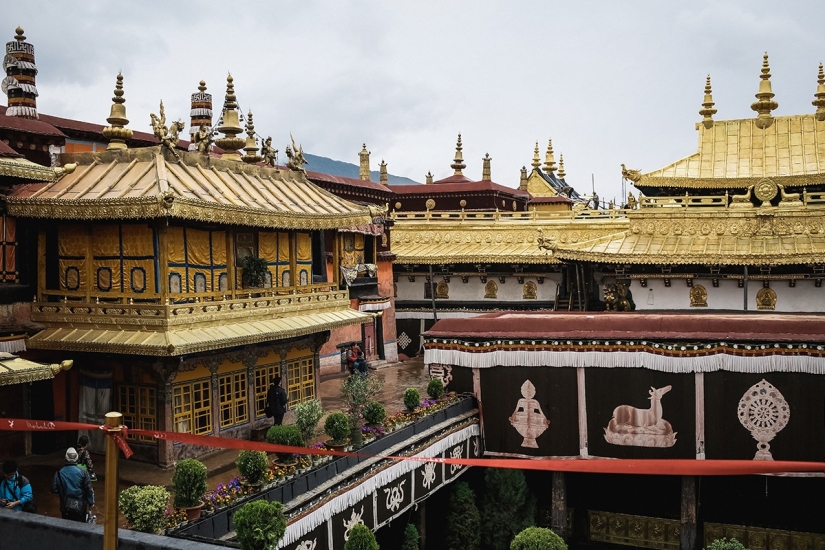
31. You will also have exactly 20 minutes to shoot the golden roof.
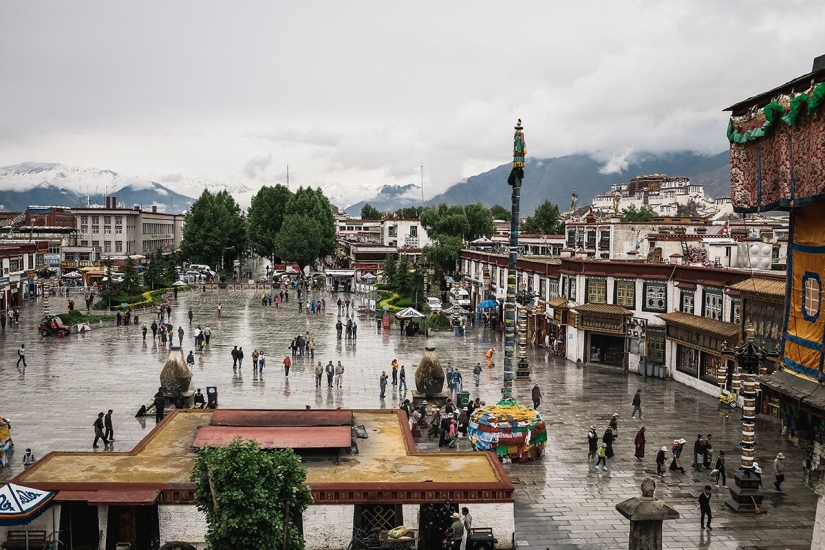
32. From the roof you can see the square in front of the temple and see the Potala Palace.
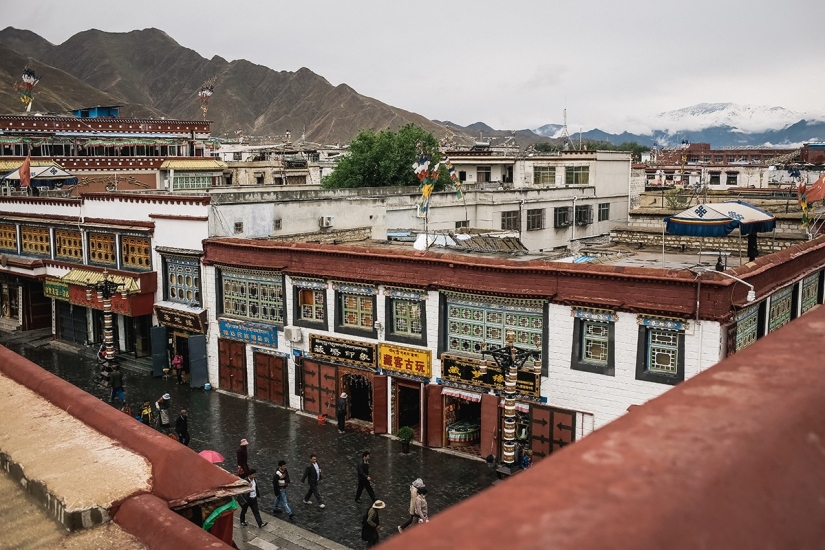
33.
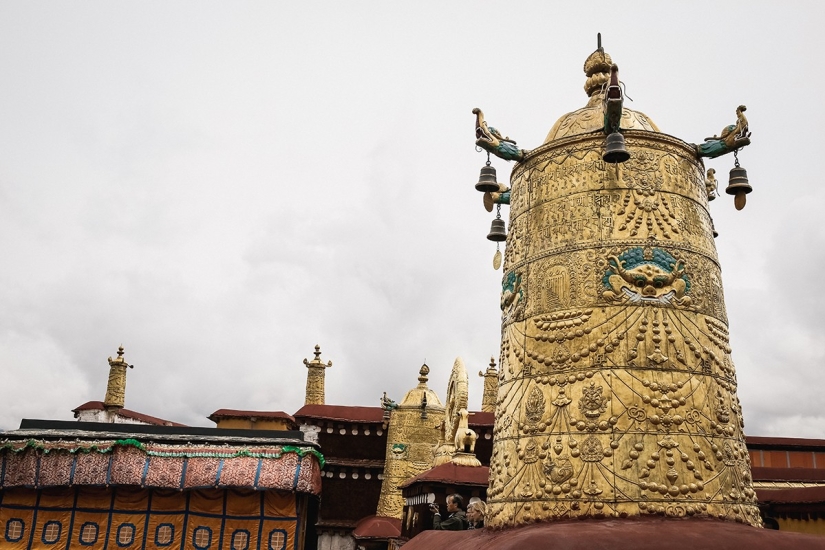
34. Initially, the temple was built in the Indian style, similar to the Indian vihara. But over time, it has undergone numerous expansions, destruction (under the Mongols and during the hours of the Cultural Revolution) and, accordingly, reconstruction.
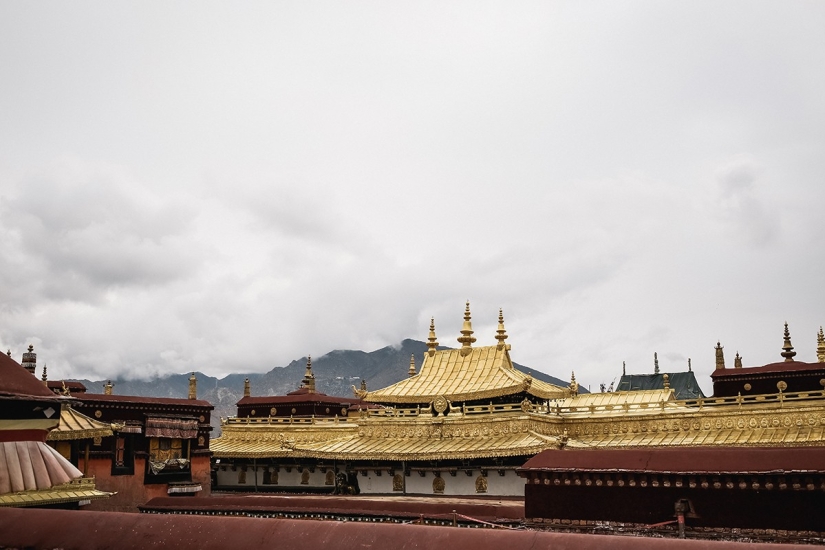
35. Now the Jokhang is a mixture of Indian, Nepalese, Chinese and Tibetan styles proper. Although it formally belongs to the Gelug school, it is visited by representatives of all other schools and even followers of the Bon religion. This is truly the spiritual center of Lhasa.
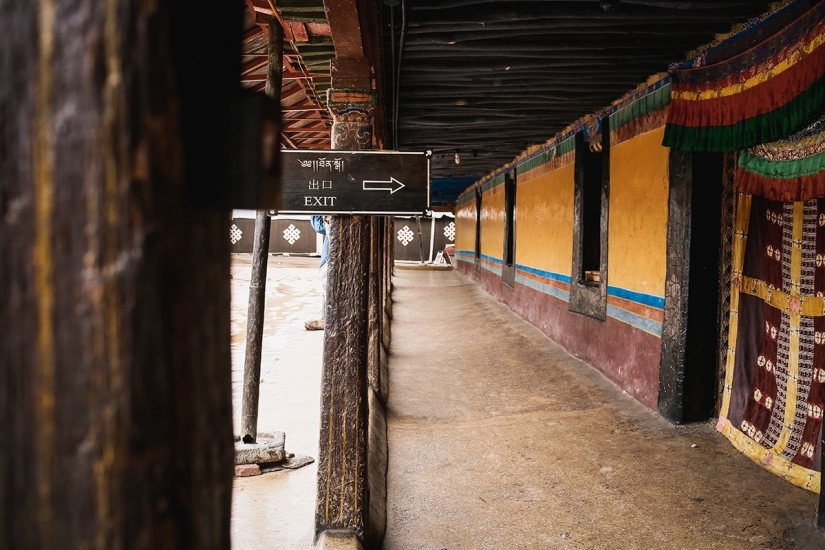
36. When the time allotted for inspection was up, we regretfully left the temple.
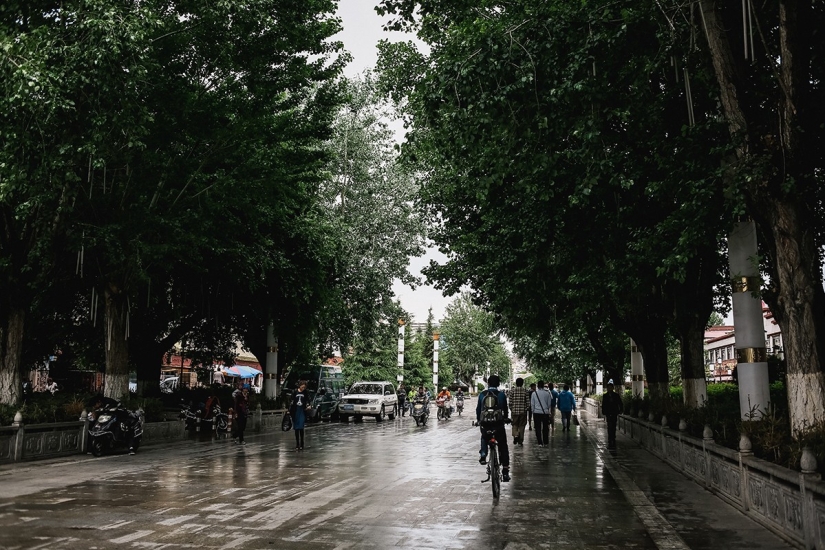
37. However, we still had a walk through the modern districts of the city and a tour of the Potala.
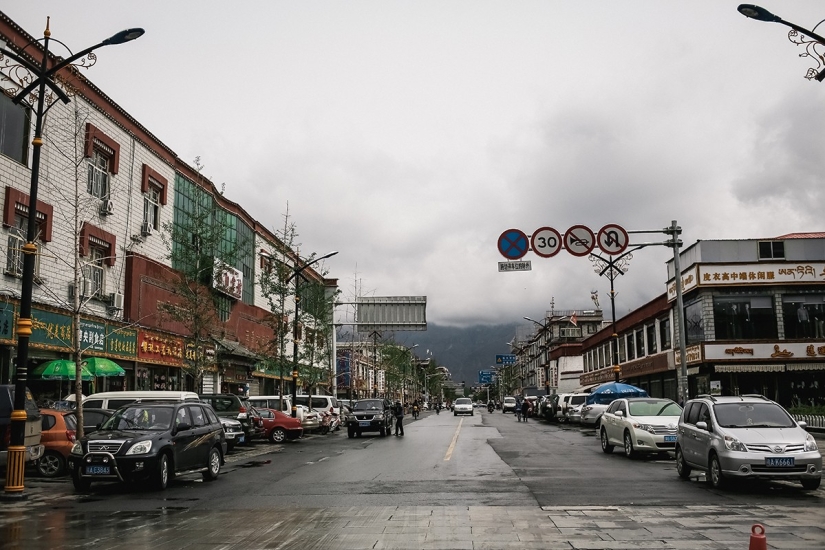
38. In principle, the Chinese authorities are doing a lot to make the city look modern. Everywhere you can see traffic lights that regulate the movement of road signs (although local drivers do not always follow them).
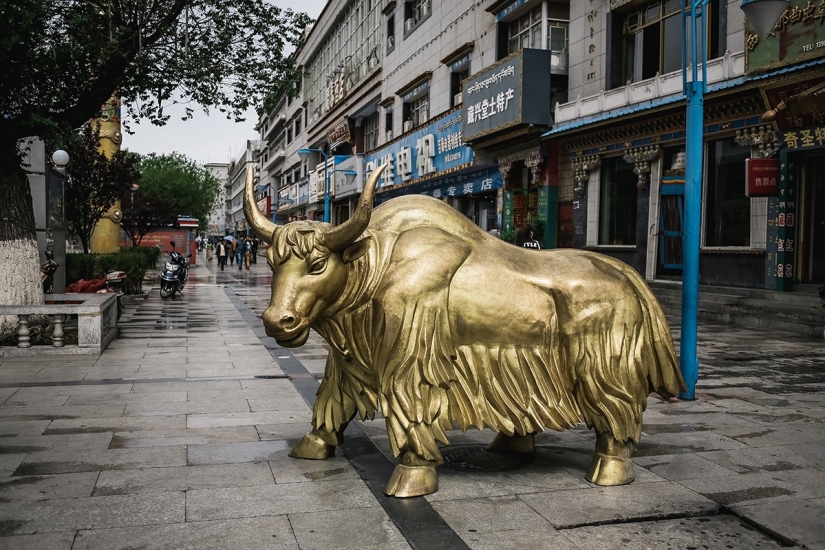
39. Walking along the pedestrian streets is also nice. Tourists love to be photographed riding this yak.
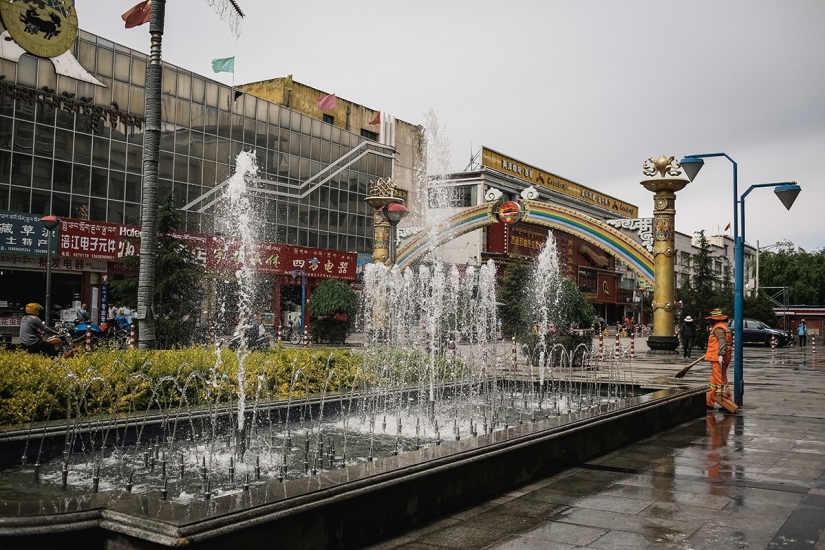
40. Cleanliness and order around. Here and there, cleaners flicker, taking care of their city.
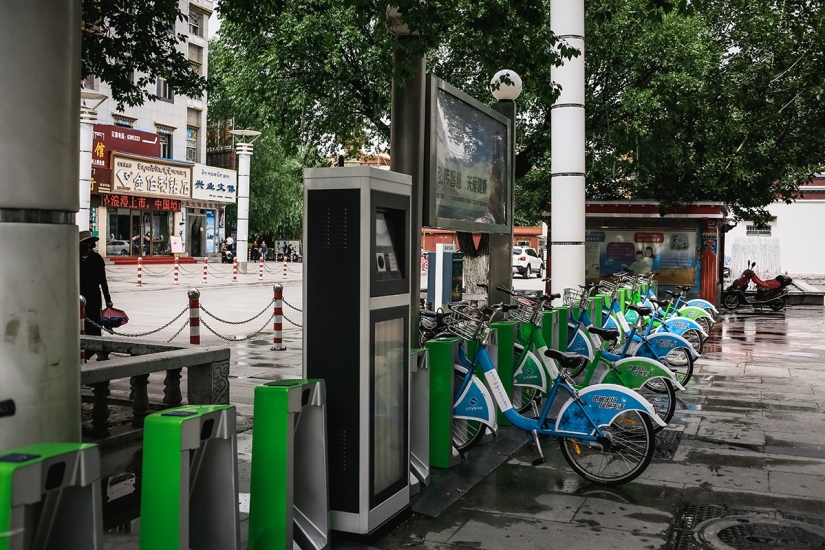
41. There is even a bike rental! Why not Europe?
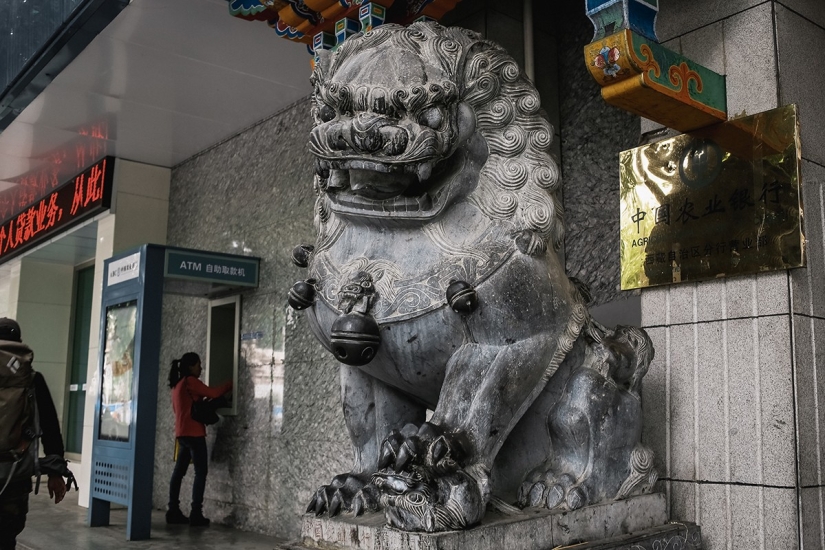
42. Bakomats are also found on every corner. It is difficult to use them due to the lack of English inscriptions. In any case, the only bank in which foreigners have the right to change money is the People's Bank of China, since we met about five branches of this bank in the city.
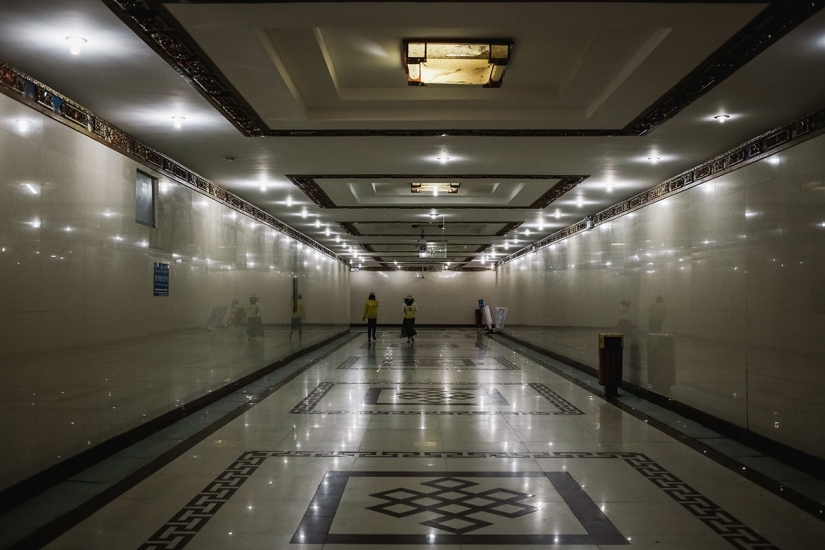
43. Having passed through a clean underground passage, the floor of which was lined with the traditional “eternal knot” pattern, which is sometimes somehow irreverently called “buddha intestines”, we reached the next goal of our excursion - the Potala Palace.
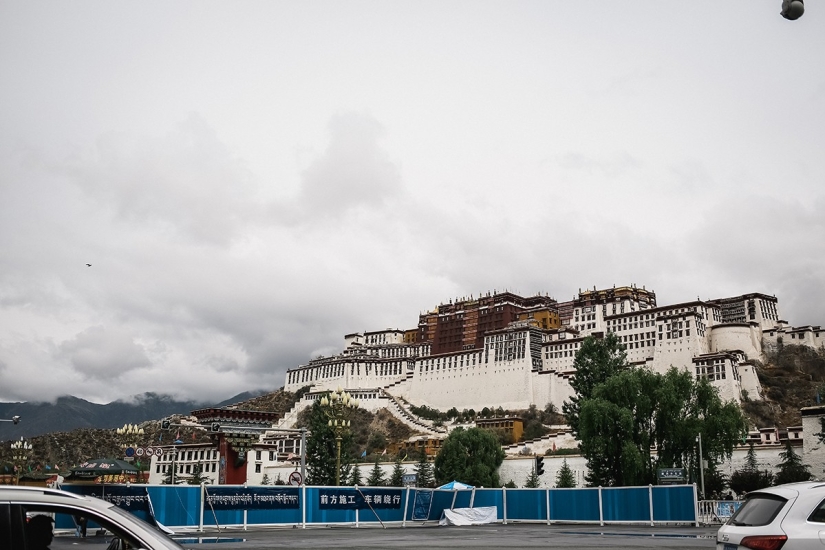
44. About what impressions this majestic complex left us, read in the next issue.
Photo: Ekaterina Ageeva / Text: Sergey Martynov
See all materials of the cycle with the tag #in search of magic.
Keywords: In search of magic | Tibet
Post News ArticleRecent articles

This series of photos perfectly illustrates how alcohol turns a respectable person into a staggering wreck, spewing a bad smell, ...

It is believed that the animal world is cruel and obeys only instincts. There is no place for mercy in it and everyone survives as ...
Related articles

"Heavenly burial" (jhator or bya gtor) is the main type of burial in Tibet and in a number of areas adjacent to Tibet. It is also ...

The Himalayas. Tibet. Something cosmic and ethereal sounds in the names. They attract visitors from all over the world. In front of ...

We all know that decomposition is a natural process that no living being can avoid after death. You can stop it with the help of ...

Spaghetti is probably one of the most popular Italian dishes. They began to do in Sicily in the XII century. For a long time, pasta ...